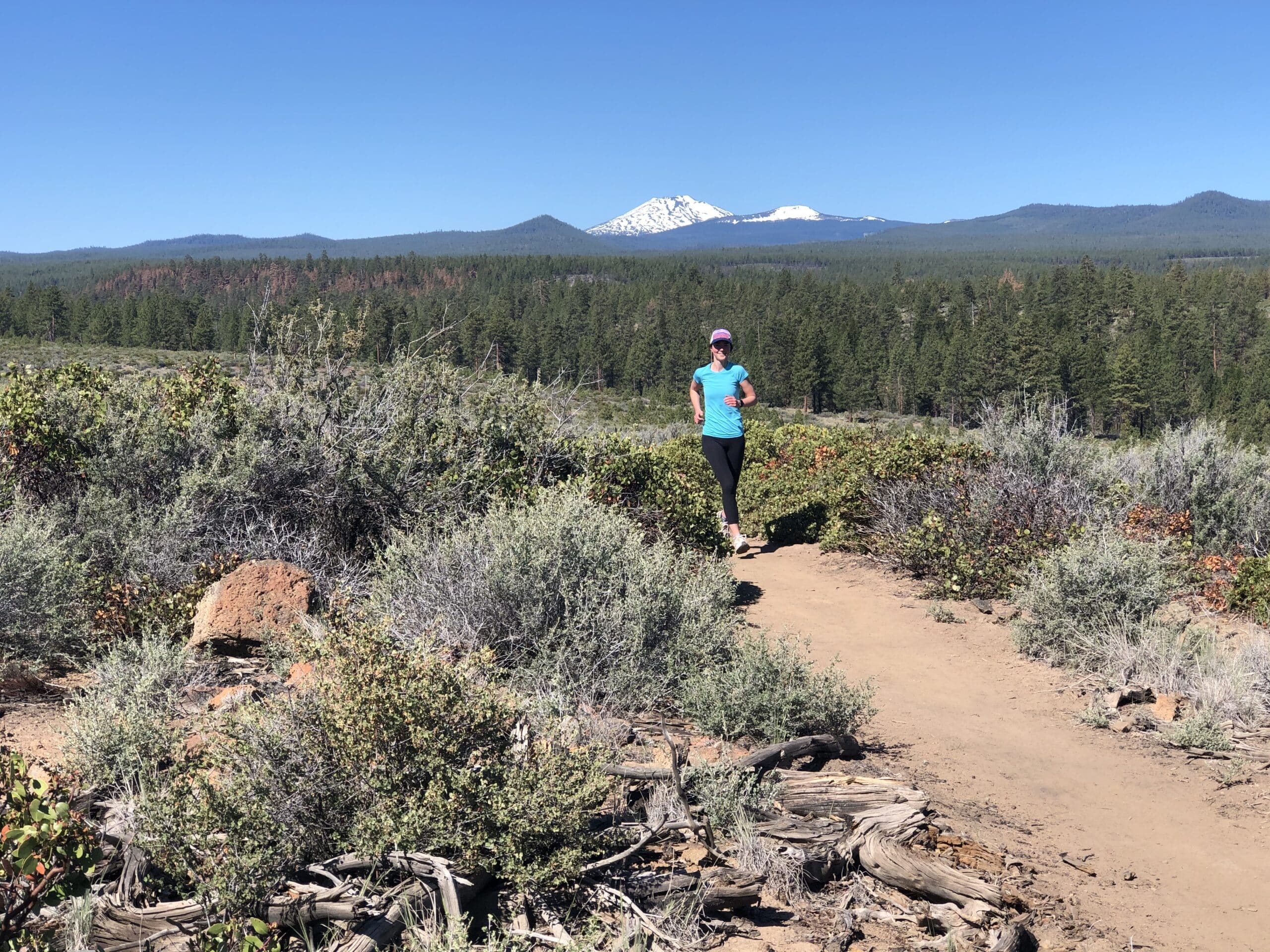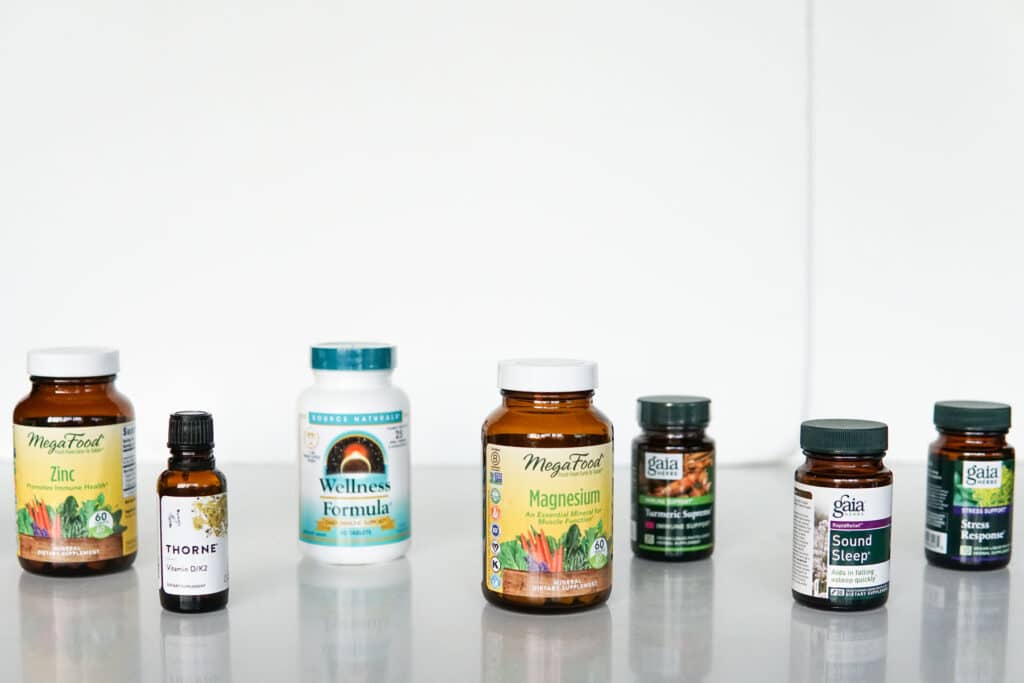Vitamin D 101

Vitamin D is so important and has so many functions in the body that I wanted to dedicate an entire blog post to it! Also, with the days getting shorter and darker, we’re absorbing way less vitamin D. So let’s take a look at why it’s so important and how to get enough of it. […]
Vitamin D is so important and has so many functions in the body that I wanted to dedicate an entire blog post to it! Also, with the days getting shorter and darker, we’re absorbing way less vitamin D. So let’s take a look at why it’s so important and how to get enough of it.
What is vitamin D?
You may be most familiar with the importance of vitamin D for bone health. Turns out, this fat-soluble “vitamin” is actually a hormone due to its wide array of functions in the body.
What is the role of vitamin D in the body?
Dozens of types of cell and tissues in our body have vitamin D receptors on them (1). So, vitamin D has soooo many functions, but let’s look at the most important and more studied roles of vitamin D.
Immune health
Vitamin D is super important for our immune health. Turns out, every single immune cell (B cells, T cells, etc…) has vitamin D receptors on it that help to fight off viruses, bacteria, etc… Several studies have shown low levels of vitamin D are correlated to an increased rate of infection and autoimmune function (2). Since cold and flu season comes around this time of year, it’s super important to keep your immune systems (and vitamin D levels) in check!
Learn more: 6 Most Important Nutrients for Immune Health!
Bone health
You need to have sufficient vitamin D levels for calcium and phosphorus to be absorbed, two very important nutrients for keeping our bones strong. Vitamin D increases absorption of these nutrients in your intestines and helps to maintain adequate levels in the blood. This is especially important for women, who are more susceptible to developing osteoporosis.
Muscle function and performance
Even our muscles have vitamin D receptors in them that help your muscles move properly and may play a role in performance and strength. Studies have shown that supplementation of vitamin D in older adults reduced fall risk and improved muscle strength (3).
Heart health
Our hearts also have lots of vitamin D receptors. Vitamin D binds to receptors in the heart to keep arteries flexible and relaxed, which in turn helps to control high blood pressure (4). It also regulates immune and inflammatory cells that play a role in cardiovascular diseases (like atherosclerosis)(4).
Brain health and mood
We have vitamin D receptors all over our nervous system and in our hippocampus (memory zone). Vitamin D is thought to have a neuroprotective and anti-inflammatory role in our brain. It also helps to carry messages from your brain to your body.
Though large studies have shown the connection between low vitamin D levels and brain function, there is still a lot we don’t know (10). Some studies also show that low vitamin D levels are associated with higher rates of mood disorders such as depression (9). Though this correlation is well-studied, the mechanism and ties between vitamin D and mood are not well known.
Hormone balance
It’s lesser known but important function is sex hormone production. A deficiency can cause low estrogen production in women (and low testosterone in men), which can interfere with your menstrual cycle and many other estrogen-related symptoms. More importantly, having low estrogen for a long period of time can cause osteoporosis later in life.
Three ways to absorb vitamin D

1. Sunshine!
This is by far the best and most effective way to absorb vitamin D. UVB rays from the sun get absorbed through your skin and converted into the active form of vitamin D. So make sure to spend time outside this fall and winter, even when it’s cloudy! It’s suggested that 10-15 minutes of sun on the arms and legs (without sunscreen) a few times a week can give us the amount of vitamin D we need (5).
Unfortunately, this is very dependent on the time of year and where you live. Also, exposing your skin to sunlight (UVB rays) can put you at higher risk of skin cancer. So, in general, it’s best to get your vitamin D from a combination of limited sun exposure, diet, and supplementation.
2. Food
You can get some vitamin D through food, but since we can’t eat large enough amounts of these foods to get a significant amount of vitamin D, we need to also use sunlight and/or supplementation.
Certain foods like milk, cereals, and juices are fortified with vitamin D. Below are my favorite food sources of vitamin D:
- Mushrooms (contain some vitamin D if grown in sunlight)
- Fatty fish (sardines, salmon, herring, mackerel…)
- Egg yolks (yolks that are more golden in color have higher amounts of nutrients)
- Cheese
So if you’re wondering what recipes are a good source of vitamin D, look for recipes that use salmon, mushrooms, and/or eggs.
3. Supplements
Vitamin D is one of the few supplements I take regularly (this is the one I use and recommend).
About 42% of Americans are deficient in vitamin D, with certain populations having much higher levels of deficiency (6). Given that statistic and the fact that we’re entering the darker shorter winter months, supplementation may be the best way to get adequate amounts of vitamin D.
It’s recommended that healthy adults supplement with 600IU and up to 1000IU vitamin D per day (7). That is assuming you don’t spend a lot of time outside in a super sunny climate year round or eat tons of fatty fish and vitamin D–fortified foods. As always, it’s best to consult your doctor and get your levels checked before supplementing. If you are deficient, you’ll likely want a higher dose. Too much vitamin D is also not a good thing (8).
Don’t forget about vitamin K!
It’s also super important to get in enough vitamin K along with your vitamin D. Vitamin K also plays a crucial role in bone health by shuttling calcium from the blood into your bones. This is why it’s important to get enough vitamin K along with your vitamin D. That’s another reason why I love this vitamin D supplement – it also has vitamin K in it!
Conclusion
It’s best to get vitamin D from a combination of limited sun exposure, diet, and supplementation (if needed). In the winter months where days are darker AND shorter, supplementation may be necessary.
I hope this blog showed you how important vitamin D is in pretty much every organ in our body and inspired you to spend more time outside this fall and winter 🙂


Resources:
1. https://chriskresser.com/vitamin-d-the-new-super-nutrient/
2. https://www.ncbi.nlm.nih.gov/pmc/articles/PMC3166406/
3. https://www.ncbi.nlm.nih.gov/pmc/articles/PMC3513873/
4. https://www.hsph.harvard.edu/nutritionsource/vitamin-d/
5. https://www.health.harvard.edu/staying-healthy/time-for-more-vitamin-d
6. https://pubmed.ncbi.nlm.nih.gov/21310306/
7. https://www.health.harvard.edu/staying-healthy/time-for-more-vitamin-d
8. https://chriskresser.com/vitamin-d-more-is-not-better/
9. https://pubmed.ncbi.nlm.nih.gov/23377209/
10. https://www.scientificamerican.com/article/does-d-make-a-difference/


leave your comments!